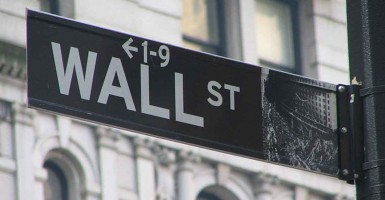Nearly six years after Congress passed the Dodd-Frank Wall Street Reform and Consumer Protection Act, one would hope Wall Street’s taxpayer-funded safety net was no longer quite as generous.
President Obama promised as much when he signed Dodd-Frank into law on July 21, 2010. “There will be no more tax-funded bailouts—period,” he said that day.
Yet, according to a recent study by the Federal Reserve Bank of Richmond, taxpayers are on the line for just as much now as they were then.
The Richmond Fed’s 2015 “Bailout Barometer” report finds that, as of the end of 2013, taxpayers cover $26 trillion of Wall Street’s $43 trillion in liabilities. That’s 60 percent—the same as in 2009, when $25 trillion out of $42 trillion in liabilities was backed by the public purse.
The dollar amount covered by taxpayers has grown significantly since 1999, when the first Bailout Barometer study was released. At that time, public funds stood behind less than 45 percent of financial liabilities. Policies enacted in the wake of the 2008 financial crisis, namely the expansion of federal deposit insurance and the government’s protection of money market mutual funds, are largely to blame for the increase.
Maintaining such a large federal backstop only increases the likelihood of future financial crises and subsequent bailouts. Creating an environment where certain large firms can expect the government to pay for their life support introduces moral hazard into the banking system, encouraging managers to take on too much risk and creditors to provide too much credit.
It also reduces economic efficiency by letting the federal officials, rather than the market, decide which firms survive and which fail. Funds should flow to firms because of their merits, not because of preferential treatment by the government.
Here are some ways lawmakers can help take taxpayers off the hook:
- End the Fed’s broken lender-of-last resort function. Congress should prohibit the Fed from making short-term loans through the discount window and emergency loans through Section 13(3) of the Federal Reserve Act. There is, in fact, no clear economic rationale for the Fed to provide direct loans to private firms. Given the development and current sophistication of financial markets, there is even less reason to allow the central bank to serve as a lender of last resort now than there was in 1913. Congress should help to minimize the chances of future too-big-to-fail-style bailouts by revoking the Federal Reserve’s emergency lending authority and closing the discount window.
- Permanently shut down Fannie and Freddie. Government-sponsored enterprises Fannie Mae and Freddie Mac should be eliminated altogether and the housing market made more stable by relying on private financial firms that are not backstopped by taxpayers.
- Reset FDIC limit to $100,000. Deposit insurance lessens customers’ incentive to monitor their banks’ risk-taking activities. Raising the FDIC limit can encourage excessive high-risk lending, thus endangering financial stability. Raising the limit to $250,000 was supposed to be temporary; policymakers should return the limit to its pre-2008 level of $100,000.






























